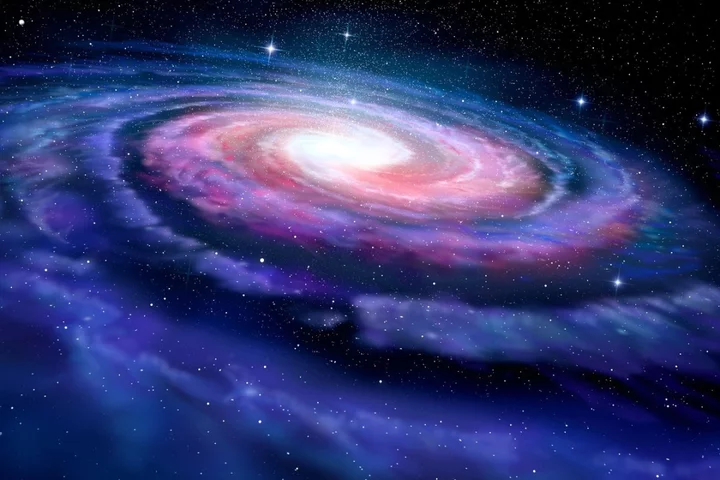Astronomers have discovered a key ingredient for life at the edge of our Milky Way galaxy. A team from the University of Arizona detected the presence of phosphorus while studying molecular clouds on the outskirts of the galaxy using giant radio telescopes in the US and Spain. Phosphorus is one of the so-called NCHOPS elements that make up the critical ingredients for life on Earth – nitrogen, carbon, hydrogen, oxygen, phosphorus and sulphur. All of the others have already been found on the edge of the galaxy, so the discovery of phosphorus has direct implications for the search for Earth-like planets around distant stars. Their observations of the chemical 74,000 light-years from the centre of the Milky Way calls into question our fundamental understanding of the universe, the researchers said. “The phosphorus we detected is at the edge of the galaxy, where it shouldn’t be,” said Lilia Koelemay, a doctoral student at the University of Arizona who led the research. Theories that could explain its presence include supernova stars, which are typically not found on the edge of galaxies, and low mass stars generating excess neutrons that are then added onto silicon atoms to create phosphorus. “To make phosphorus, you need some kind of violent event,” said Lucy Ziurys, Regents Professor of chemistry and biochemistry and astronomy at Steward Observatory. “It is thought that phosphorus is created in supernova explosions, and for that, you need a star that has at least 20 times the mass of the Sun. In other words, if you’re going to have life, you better be near a supernova, if that’s indeed the only source where phosphorus is created.” The detection of phosphorus at the edge of the galaxy could motivate studies of distant exoplanets, the researchers hope, which have not been properly considered until now due to the assumed lack of the chemical. The research team now plans to examine other molecular clouds in the far reaches of the Milky Way to see if they contain phosphorus. Their discovery was described in a paper, titled ‘Phosphorus-bearing molecules PO and PN at the edge of the galaxy’, in the scientific journal Nature. Read More Astronomers find unprecedented ‘disc’ around distant planet Astronomers discover new six-planet system China unveils ‘foldable’ Mars helicopter in mission to return samples to Earth China unveils ‘foldable’ Mars helicopter in mission to return samples to Earth New images of Mars released by Nasa’s Odyssey orbiter Scientists find planets moving around in strange ‘rhythm’
Astronomers have discovered a key ingredient for life at the edge of our Milky Way galaxy.
A team from the University of Arizona detected the presence of phosphorus while studying molecular clouds on the outskirts of the galaxy using giant radio telescopes in the US and Spain.
Phosphorus is one of the so-called NCHOPS elements that make up the critical ingredients for life on Earth – nitrogen, carbon, hydrogen, oxygen, phosphorus and sulphur.
All of the others have already been found on the edge of the galaxy, so the discovery of phosphorus has direct implications for the search for Earth-like planets around distant stars.
Their observations of the chemical 74,000 light-years from the centre of the Milky Way calls into question our fundamental understanding of the universe, the researchers said.
“The phosphorus we detected is at the edge of the galaxy, where it shouldn’t be,” said Lilia Koelemay, a doctoral student at the University of Arizona who led the research.
Theories that could explain its presence include supernova stars, which are typically not found on the edge of galaxies, and low mass stars generating excess neutrons that are then added onto silicon atoms to create phosphorus.
“To make phosphorus, you need some kind of violent event,” said Lucy Ziurys, Regents Professor of chemistry and biochemistry and astronomy at Steward Observatory.
“It is thought that phosphorus is created in supernova explosions, and for that, you need a star that has at least 20 times the mass of the Sun. In other words, if you’re going to have life, you better be near a supernova, if that’s indeed the only source where phosphorus is created.”
The detection of phosphorus at the edge of the galaxy could motivate studies of distant exoplanets, the researchers hope, which have not been properly considered until now due to the assumed lack of the chemical.
The research team now plans to examine other molecular clouds in the far reaches of the Milky Way to see if they contain phosphorus.
Their discovery was described in a paper, titled ‘Phosphorus-bearing molecules PO and PN at the edge of the galaxy’, in the scientific journal Nature.
Read More
Astronomers find unprecedented ‘disc’ around distant planet
Astronomers discover new six-planet system
China unveils ‘foldable’ Mars helicopter in mission to return samples to Earth
China unveils ‘foldable’ Mars helicopter in mission to return samples to Earth
New images of Mars released by Nasa’s Odyssey orbiter
Scientists find planets moving around in strange ‘rhythm’









